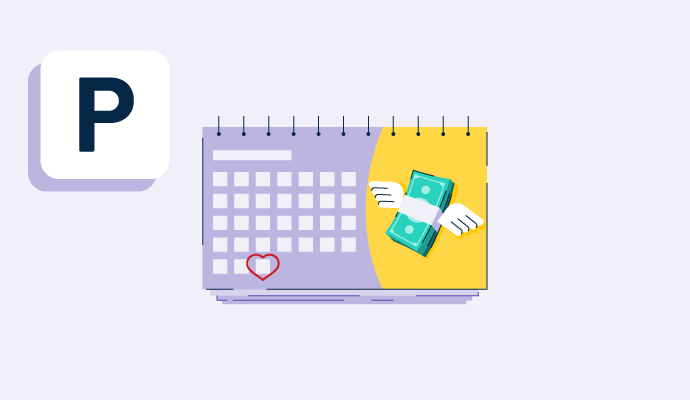What is payroll?
Payroll is a company’s process for managing employee compensation. The term can also refer to the list of people a company pays.
The payroll process is often complex, as employees need to receive their payments at predictable intervals, but they may have different wages, overtime hours, and deductions. Large organizations often outsource payroll to save time and ensure compliance.
Payroll software helps companies organize and manage the payment of their employees, including printing paychecks or making direct deposits. With these tools, companies also keep accurate payment records for accounting and bookkeeping purposes.
Types of payroll
Companies have multiple options when it comes to running payroll. The choice they make depends on their industry and company size. The most common ways to process payroll are:
- Manual. Smaller companies may opt for manual processing. Employees turn in time cards or timesheets, and the owner or bookkeeper calculates each individual’s earnings and writes their checks. This method requires companies to stay organized, detail-oriented, and disciplined to keep accurate records and pay workers on time.
- Software. Payroll software simplifies human resources (HR) department processes and securely stores employee data. The software stores employees’ identifying information, wages, and deductions, then calculate their earnings and issues payments. The HR and accounting departments can count on reliable data calculation and easier workflows.
- Outsourcing. This option is popular among companies of any size that want the peace of mind of knowing that a dedicated professional is handling their payroll. These companies hire an external payroll service provider to oversee all processes and provide them with regular reports.
Basic elements of payroll
Firstly, each type of payroll requires some essential information. Organizations need to collect the following documents and data:
- Employee forms. In the United States, the government requires employers to collect certain forms from their new hires before adding them to the payroll. A W-4 form provides basic information, including name, address, and social security number, and allows employees to select their tax withholdings. Another document, the I-9 form, verifies the worker’s employment eligibility.
- Pay frequency. Companies must select intervals for employee payment. Standard options include weekly, bi-weekly, semi-monthly, and monthly.
- Salary and wages. Some employees earn an annual salary, which is divided up by the number of paychecks for the year. Others may receive an hourly wage, which is multiplied by the number of hours worked in the pay period. Pay must also include the overtime hours employees work, often at a higher rate. Depending on an employee’s position, they may earn bonuses, like merit pay, or commissions for some pay periods.
- Deductions and withholdings. A worker’s gross pay isn’t the amount they receive on a check or through direct deposit. Instead, the company must apply deductions and withholdings. For instance, most employees have money deducted from their paychecks for income taxes, social security, and Medicare.
- Net pay. Once a company has made all deductions from an employee’s paycheck, the remaining amount is called net pay. This amount, which the company must report to the internal revenue service (IRS) along with gross pay, is the total amount the employee receives as payment for their services.
Payroll best practices
Keeping up with payroll is a massive undertaking and expenditure for most businesses. To ensure that the process goes smoothly, organizations should focus on the following:
- Ensuring compliance. Payroll is a heavily regulated process with complex laws. The people in charge of payroll, including internal employees or outside agencies, need to know all state and federal guidelines. Companies should research to ensure they’re paying the state minimum wage, providing overtime to employees when required, and paying employees within the legal timeframe set by their state.
- Creating a payroll guide. Solidifying and clarifying all policies in writing assures company-wide understanding, especially in larger organizations with extensive HR and accounting departments is crucial. Companies should include a checklist for new hires to get them started in the system.
- Solidifying record-keeping practices. The Fair Labor Standards Act (FLSA) dictates which records companies need to keep. Most should store payroll records for at least three years and payroll tax records for at least four. If a company has large numbers of employees, this equates to pages of paperwork. Companies conducting payroll manually should develop a detailed plan and workflow to securely store the records. If using software, organizations need a plan for downloading and digitally storing documents, as well.
- Setting reminders for deadlines. The Department of Labor (DOL) establishes and enforces deadlines for companies to submit employees’ documents and tax payments. HR departments should set electronic reminders to ensure they turn in all paperwork and payments on schedule to avoid fines.
Want to take a more hands-off approach to payroll? Consider outsourcing to a payroll service provider to save time and ensure accuracy.

Kelly Fiorini
Kelly Fiorini is a freelance writer for G2. After ten years as a teacher, Kelly now creates content for mostly B2B SaaS clients. In her free time, she’s usually reading, spilling coffee, walking her dogs, and trying to keep her plants alive. Kelly received her Bachelor of Arts in English from the University of Notre Dame and her Master of Arts in Teaching from the University of Louisville.

